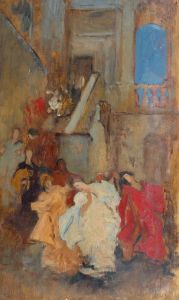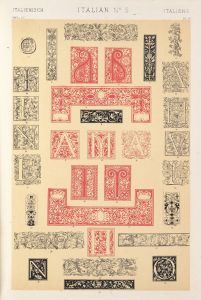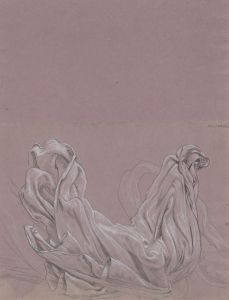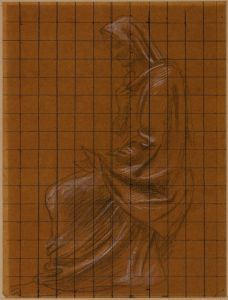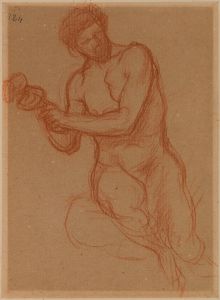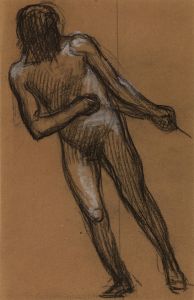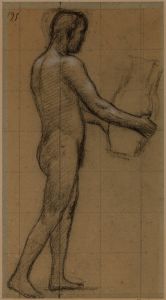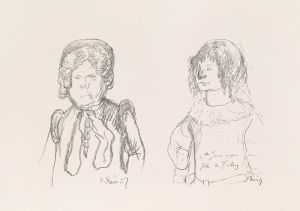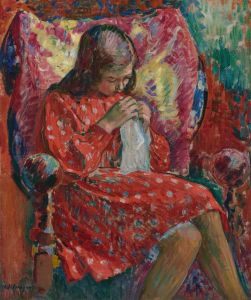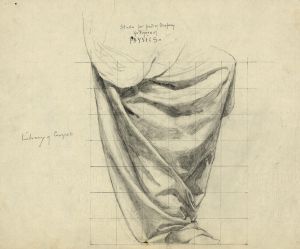
Etude de draperie
A hand-painted replica of Pierre Puvis de Chavannes’s masterpiece Etude de draperie, meticulously crafted by professional artists to capture the true essence of the original. Each piece is created with museum-quality canvas and rare mineral pigments, carefully painted by experienced artists with delicate brushstrokes and rich, layered colors to perfectly recreate the texture of the original artwork. Unlike machine-printed reproductions, this hand-painted version brings the painting to life, infused with the artist’s emotions and skill in every stroke. Whether for personal collection or home decoration, it instantly elevates the artistic atmosphere of any space.
Pierre Puvis de Chavannes was a notable French painter of the 19th century, renowned for his mural paintings and his influence on the Symbolist movement. One of his works, "Etude de draperie," translates to "Study of Drapery" in English. This piece is a testament to Puvis de Chavannes' meticulous attention to detail and his dedication to mastering the depiction of fabric and form, which was a common practice among artists seeking to refine their skills in rendering textures and folds realistically.
"Etude de draperie" is not one of Puvis de Chavannes' most famous works, but it serves as an important study piece that reflects his artistic process. Drapery studies were a traditional exercise for artists, allowing them to explore the interplay of light and shadow on fabric, which is crucial for creating depth and realism in larger compositions. These studies often involved drawing or painting fabric arranged in various ways to understand how it behaves under different conditions.
Puvis de Chavannes' approach to drapery was likely influenced by his academic training and the classical traditions that emphasized the importance of such studies. His education included time at the École des Beaux-Arts in Paris, where he would have been exposed to the rigorous academic standards of the time. This background helped him develop a style that, while rooted in classical techniques, also paved the way for more modern expressions of art.
The significance of "Etude de draperie" lies in its role as a preparatory work that would inform Puvis de Chavannes' larger and more complex compositions. His murals, which adorn the walls of many public buildings in France, often feature figures draped in flowing garments, and the skills honed in studies like "Etude de draperie" would have been essential in achieving the desired effect in these grand works.
Puvis de Chavannes' influence extended beyond his own creations. He was a pivotal figure in the transition from traditional academic art to the more abstract and symbolic forms that characterized the late 19th and early 20th centuries. His work inspired many artists, including the likes of Georges Seurat and Paul Gauguin, who admired his ability to convey emotion and narrative through simplified forms and muted color palettes.
While "Etude de draperie" itself may not be widely exhibited or discussed, it represents a crucial aspect of Puvis de Chavannes' artistic development. Such studies are invaluable for understanding the foundational techniques that underpin an artist's more celebrated works. They offer insight into the artist's process and the meticulous preparation that goes into creating art that stands the test of time.
In summary, "Etude de draperie" by Pierre Puvis de Chavannes is a study piece that highlights the artist's dedication to mastering the depiction of drapery, a skill that significantly contributed to his success as a muralist and his influence on future generations of artists. While not a major work in its own right, it is an essential part of understanding the artist's oeuvre and the broader context of 19th-century art.





